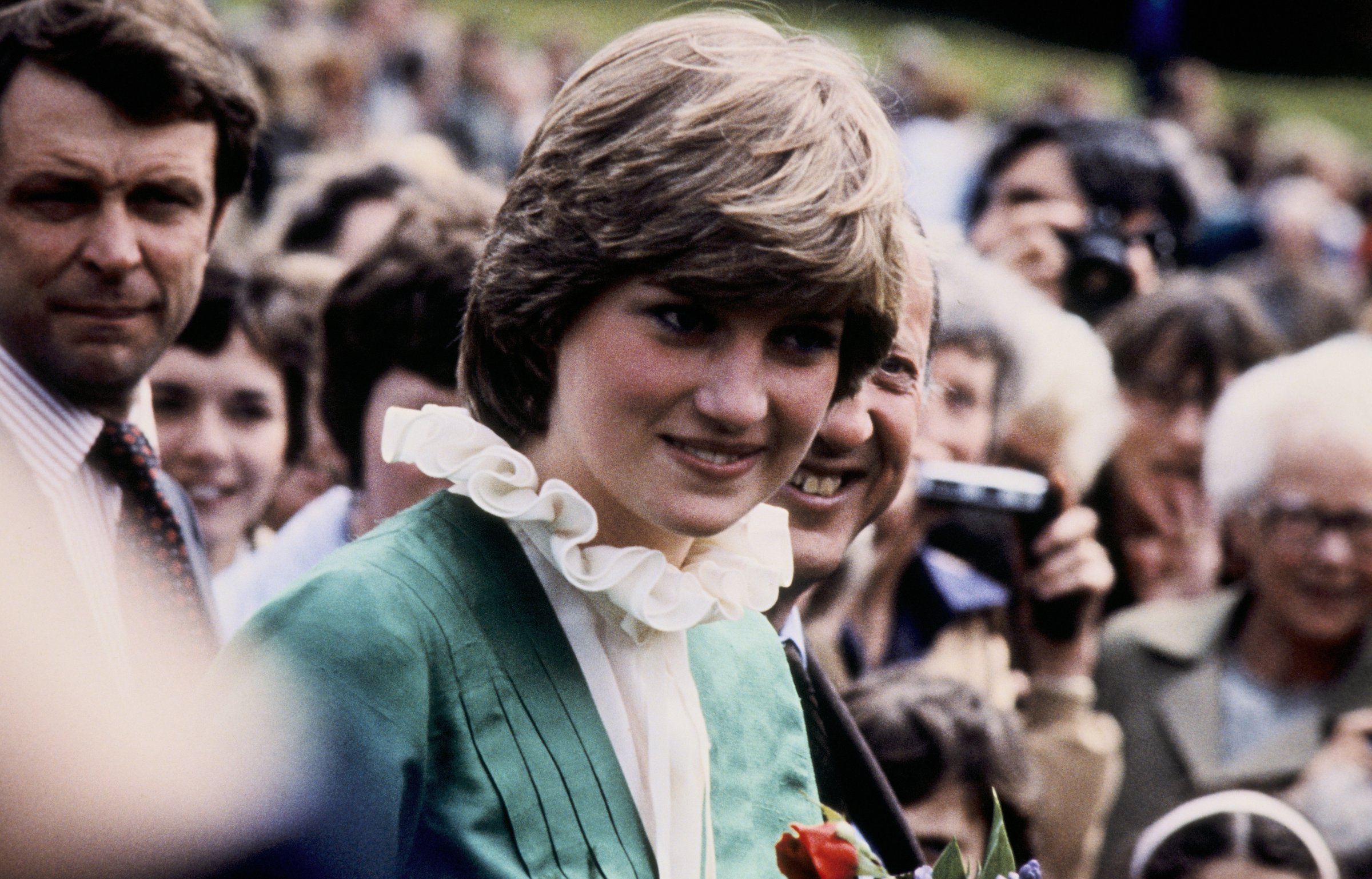
This year, to mark the 20 years since Princess Diana’s death on Aug. 31, 1997, many of her admirers may make a pilgrimage to her burial site at Althorp, her childhood home in Northamptonshire, England. That home, which has been in her family since 1508, is just one of the reminders that, while Diana was often characterized as “the girl next door” at the time of her fairytale wedding to Prince Charles, that door would have been located — literally and metaphorically — in an unusual neighborhood.
Long before she was actually a Princess, Lady Diana Spencer was connected to the royal family.
Born Diana Spencer in 1961, she earned the title “Lady” in 1975 when her father inherited the title of Earl. TIME reported in 1981 that, over the years, royals befriended various members of the Spencer family, who served as courtiers to the Crown. “Diana’s brother, Charles, 16, is Queen Elizabeth’s godson,” the magazine added. “Her father, the very wealthy eighth Earl Spencer, is the late Queen Mary’s godson, as well as former personal aide to both King George VI and the present Queen. Her maternal grandmother, Lady Fermoy, is a lady in waiting to the Queen Mother. Said a consultant to Burke’s Peerage, the Who’s Who of British aristocracy: ‘There cannot be another family so stiff with royal connections.'”
Within a cover package on Charles and Diana’s engagement published the following month, one article delved into her illustrious family tree even further:
She has more English royal blood in her veins than does Prince Charles, her 16th cousin once removed. All of it flowing from illegitimate unions. Four of her ancestors were mistresses to English Kings. Three dallied with Charles II (1630-85), a compulsive philanderer whose amorous activities produced more than a quarter of the 26 dukedoms in Great Britain and Ireland. The fourth royal paramour, Arabella, daughter of the first Sir Winston Churchill, was a favorite of James II (1633-1701) and bore him a daughter. In short, while Diana’s blood may run blue, even purple, scarlet women and black sheep have added to its color…
Others of Diana’s kinsmen made their mark in worldly affairs, many as great statesmen. George Washington is an eighth cousin seven times removed, and through the wife of an eccentric American great-great-grandfather, Diana is related to Presidents John Adams, John Quincy Adams, Calvin Coolidge, Millard Fillmore, Rutherford B. Hayes, Grover Cleveland and Franklin D. Roosevelt. Sir Winston Churchill (middle name: Spencer) is a cousin, as is former Prime Minister Sir Alec Douglas-Home. Scholarly limbs include Historian Henry Adams, Philosopher Bertrand Russell and Lexicographer Noah Webster. Theatrical boughs: Humphrey Bogart and Lillian Gish.
The family was there for the royals during good times and bad. Queen Victoria once said the fourth Earl Spencer, Frederick, (1798-1857), had the best legs she’d ever seen on a man, according to The Spencers: A Personal History of an English Family, written by Diana’s journalist brother Charles. On a more serious note, the Third Baron Spencer, Henry, helped fund Charles I’s army during the English Civil War, and died in battle during a clash at Newbury. And Sarah Jennings Churchill, the Duchess of Marlborough (who was linked to the Spencer family through her daughter, who married Charles Spencer the third Earl of Sunderland) was the richest woman in England at one point during the 18th century, and famous for being Queen Anne’s confidante.
There even happened to be another Lady Diana Spencer in the family in the mid-18th century. Her family tried to set her up with Prince of Wales, and Charles Spencer’s book claims that a wedding date was secretly being hammered out, and that at the peak of marriage negotiations her dowry boasted £100,000. However, when the Prime Minister found out about the plan, he encouraged King George II, “to find someone less politically threatening” for the prince, who ended up marrying the younger Princess Augusta of Saxe-Coburg. That Diana ended up marrying the brother of the Duke of Bedford, Lord John Russell, but she would die tragically young, at 25, of consumption.
The Spencer to whom Diana has been most famously compared is her great-great-great-great aunt Georgiana, the Duchess of Devonshire (1757-1806). Both married men who were more than 10 years older than they were, and both also struggled with bulimia. Georgiana had her scandalous side — there were reports that she tore the rings off her fingers to place on gaming tables — but she was best known as a style icon, for popularizing French hair powder, muslin gowns, hairpieces made of ostrich feathers, and three-foot hair towers. “It would be no exaggeration to state that Georgiana was the epicentre of all that was modish and desirable.”
Today, the glamour gene in the Spencer family continues, with the flashy lifestyles of the current generation of Spencers on display on social media.
More Must-Reads from TIME
- Breaking Down the 2024 Election Calendar
- How Nayib Bukele’s ‘Iron Fist’ Has Transformed El Salvador
- What if Ultra-Processed Foods Aren’t as Bad as You Think?
- How Ukraine Beat Russia in the Battle of the Black Sea
- Long COVID Looks Different in Kids
- How Project 2025 Would Jeopardize Americans’ Health
- What a $129 Frying Pan Says About America’s Eating Habits
- The 32 Most Anticipated Books of Fall 2024
Write to Olivia B. Waxman at olivia.waxman@time.com